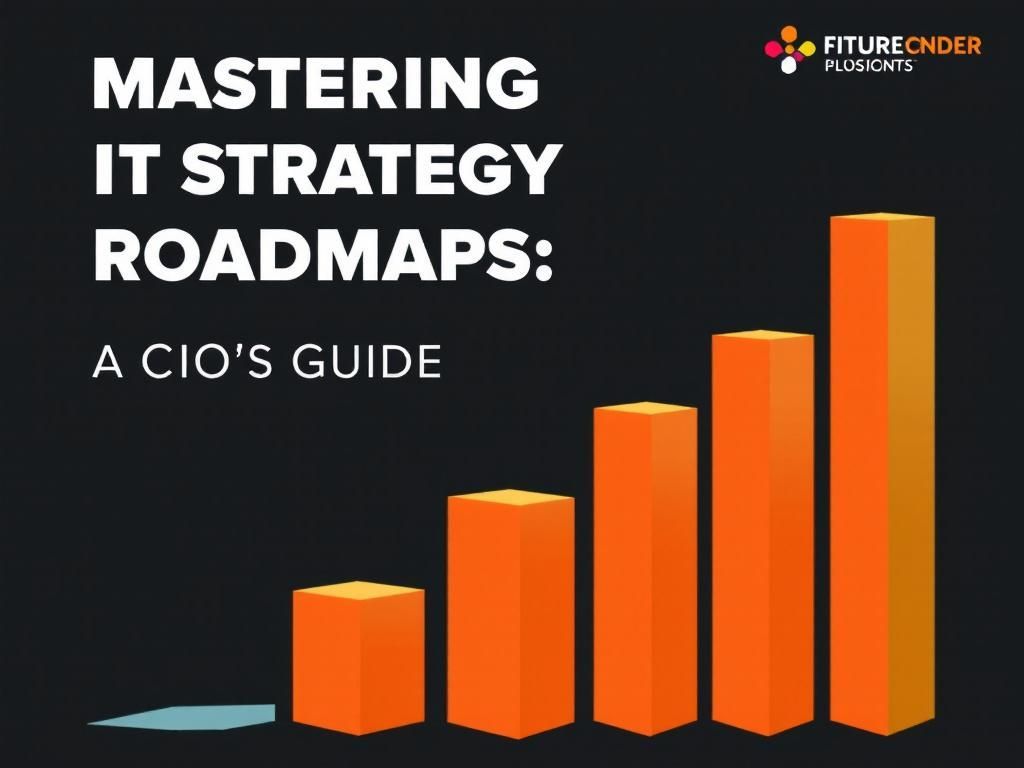Crafting Your IT Strategy Roadmap: A Guide for CIOs
Discover how CIOs can effectively craft their IT strategy roadmap to drive innovation and success in today's digital landscape.

In today’s rapidly evolving technological landscape, the role of the Chief Information Officer (CIO) has transformed significantly. CIOs are no longer just IT managers; they are pivotal figures in shaping their organization’s strategic direction. Crafting an effective IT strategy roadmap is crucial for aligning technology initiatives with business goals, ensuring that the organization remains competitive and responsive to changing market demands. This article delves into the essential components of developing a robust IT strategy roadmap, providing insights and practical steps for CIOs.
Table of Contents
Understanding the Importance of an IT Strategy Roadmap
An IT strategy roadmap serves as a guiding document that outlines an organization’s technology objectives, priorities, and initiatives over a specified timeline. The significance of this roadmap can be summarized through the following points:
- Alignment with Business Goals: A well-crafted roadmap ensures that IT initiatives directly support the overall business strategy.
- Resource Allocation: It provides a framework for allocating resources, including budget and personnel, to initiatives that drive the most value.
- Risk Management: Identifying potential risks and challenges allows for proactive mitigation strategies.
- Stakeholder Engagement: A roadmap fosters communication and collaboration among stakeholders, ensuring buy-in and support.
Key Components of an IT Strategy Roadmap
Creating an effective IT strategy roadmap involves several critical components that ensure comprehensiveness and clarity. Below are the fundamental elements to consider:
1. Vision and Mission Statement
Your roadmap should begin with a clear vision and mission statement for IT that reflects the overall goals of the organization. Consider the following when crafting this statement:
- What are the long-term goals for IT?
- How does IT support the organization’s mission?
2. Current State Assessment
Before outlining future initiatives, assess the current state of your IT infrastructure and capabilities. This assessment should include:
- Technology inventory: Identify existing hardware, software, and systems.
- Performance metrics: Evaluate the effectiveness of current IT operations.
- SWOT analysis: Understand strengths, weaknesses, opportunities, and threats in your IT environment.
3. Future State Vision
Define what the ideal future state of your IT environment looks like. Consider technology trends, emerging tools, and how they can benefit your organization. Questions to guide this vision include:
- What technologies will be essential for future growth?
- How will operational efficiency improve through new tools?
4. Strategic Initiatives and Prioritization
Identify key strategic initiatives that will drive the IT vision forward. These initiatives may include:
- Cloud migration
- Cybersecurity enhancements
- Data analytics implementation
- Digital transformation projects
Prioritize these initiatives based on factors such as cost, impact, and alignment with business goals.
5. Implementation Plan
For each initiative, create a detailed implementation plan that outlines:
- Timeline: When will the initiative start and finish?
- Resources: What resources (staff, budget, technology) are needed?
- Key stakeholders: Who is responsible for each initiative?
6. Key Performance Indicators (KPIs)
Establish KPIs to measure the success of each initiative. Examples of KPIs include:
| Initiative | KPI | Target |
|---|---|---|
| Cloud Migration | Cost savings | 20% reduction over two years |
| Cybersecurity Enhancements | Number of incidents | Decrease by 30% |
| Data Analytics Implementation | Decision-making speed | Improve by 50% |
Engaging Stakeholders in the Process
An effective IT strategy roadmap cannot be developed in isolation. Engaging key stakeholders throughout the process ensures that their insights and needs are considered. Here are strategies to involve stakeholders:
- Regular Communication: Schedule workshops and meetings to discuss the roadmap’s development and gather feedback.
- Cross-Departmental Collaboration: Involve representatives from different business units to ensure diverse perspectives.
- Solicit Feedback: Use surveys and questionnaires to gather input and insights from employees across the organization.
Review and Adaptation
The technology landscape is constantly changing, and so should your IT strategy roadmap. Regular reviews and adaptations are essential to ensure the roadmap remains relevant. Consider the following:
- Annual reviews: Schedule a yearly assessment of the roadmap to reflect changing business priorities.
- Agile adjustments: Be prepared to make agile changes based on new technologies or market conditions.
- Feedback loops: Establish a system for ongoing feedback from stakeholders to inform necessary adjustments.
Conclusion
Crafting an IT strategy roadmap is a complex yet rewarding endeavor for CIOs. By clearly defining the vision, assessing the current state, establishing strategic initiatives, and engaging stakeholders, CIOs can develop a roadmap that not only drives technology initiatives but also aligns them with the broader business objectives. In an era where technology continues to shape business outcomes, a well-articulated IT strategy roadmap is not just an option; it is a necessity for long-term success.
FAQ
What is an IT strategy roadmap?
An IT strategy roadmap is a strategic plan that outlines how an organization will leverage technology to achieve its business goals, including timelines, resources, and key milestones.
Why is an IT strategy roadmap important for CIOs?
An IT strategy roadmap is crucial for CIOs as it provides a clear direction for technology investments, aligns IT initiatives with business objectives, and helps to prioritize projects based on organizational needs.
How do I start crafting my IT strategy roadmap?
To start crafting your IT strategy roadmap, assess your current IT capabilities, identify business goals, gather input from stakeholders, and define key initiatives that align technology with those goals.
What are the key components of an effective IT strategy roadmap?
Key components of an effective IT strategy roadmap include a vision statement, current state analysis, goal setting, initiative prioritization, resource allocation, timelines, and measurement metrics.
How often should I update my IT strategy roadmap?
Your IT strategy roadmap should be reviewed and updated regularly, at least annually, or whenever significant changes in business strategy or technology occur, to ensure it remains relevant and aligned.
What role does stakeholder engagement play in creating an IT strategy roadmap?
Stakeholder engagement is vital in creating an IT strategy roadmap as it ensures that the roadmap reflects the needs and priorities of various departments, fostering collaboration and buy-in across the organization.






